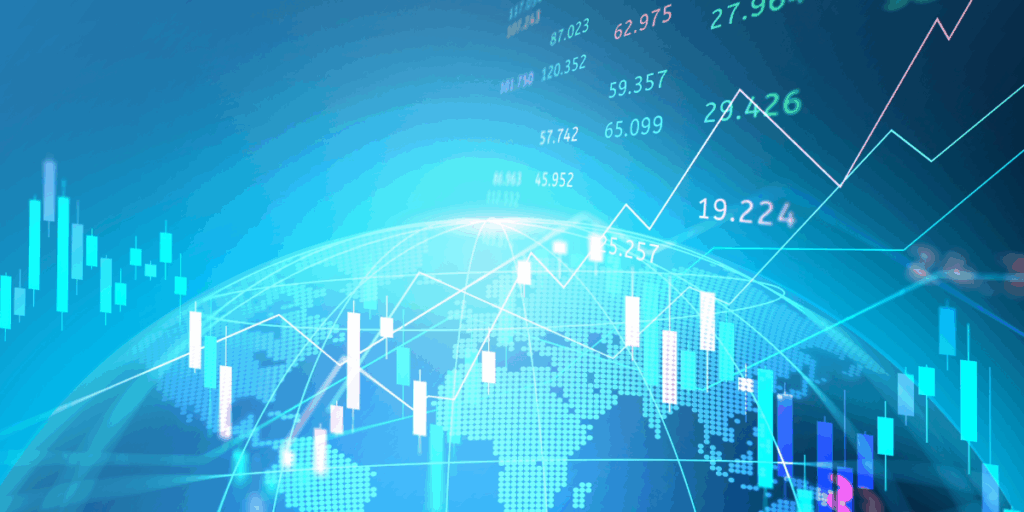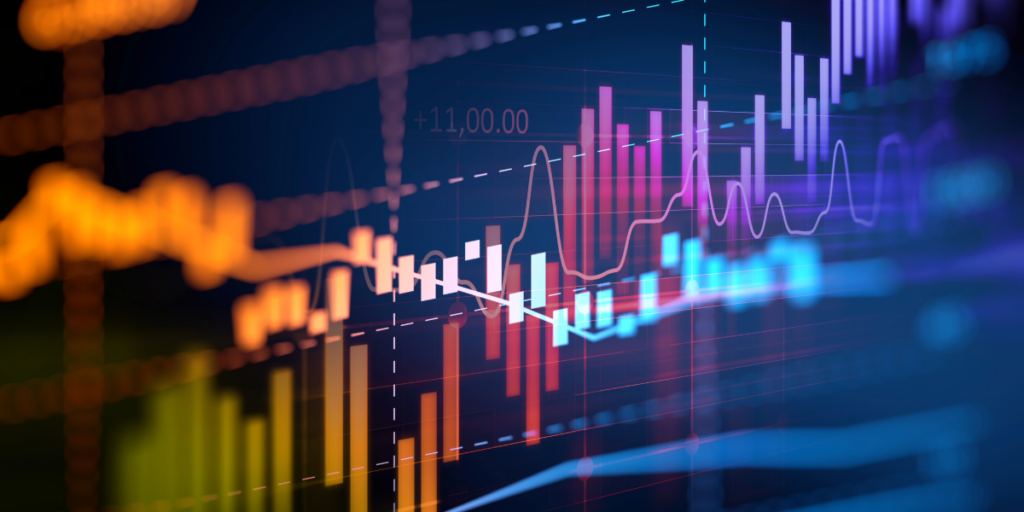For those of you who would prefer to listen:
The Olympics are in full swing in Paris. In fact, they’ve already reached the halfway point. The world has been watching. Olympic viewership is up 80% from the Tokyo Games in 2021. 34 Million Americans have been watching the games this week on average in primetime. This is a significant number considering the time difference in France. The actual events occurred earlier in the day with plenty of live access. But the experience of watching the Olympics in the evening has been a time-honored tradition that still lives in this Digital Age. This is indeed a moment in time to witness greatness in the likes of Simone Biles and Katie Ladecky.
While the competition is taking place in Paris, there’s been quite a heated contest on Wall Street. It’s a Stock Market tug-of-war between the Bulls and the Bears. Last week was a Tech Wreck, with the NASDAQ suffering its worst daily decline in over a year. The Bears took control. This week brought a Tech rip, with the NAS having its best day since February to close out July. The Bulls fought back. But the calendar shifted to August, with a series of Bear slashes that sent the Bulls wounded into the weekend. This contest is far from over.
The Bulls captured Gold in H1. 2024 brought the best start to a Presidential Election year for the Stock Market in history. It often felt like stock prices never fell. The Bulls were armed with the Magnificent 7 and a once-in-a generational growth theme called AI. Excitement filled the arena. It seemed so easy. The remaining 493 stocks in the S&P 500 didn’t matter. Negative signals were completely ignored.
But the Bears upped their game in July. They accelerated to start August. The environment changed. Euphoria around AI is having a reality check. Violent price swings of 2% have become daily moves. The Bulls underestimated their opponents. There’s a growth scare.
The mood was very celebratory on Wednesday after Fed Chair Powell announced that a September rate cut was very likely. Tech stocks were back and off to the races again. But things reversed fast as more economic data rolled out. The Economy is slowing. Consumer spending is stalling. I’ll also add, Wednesday was the final trading day of the month. That can bring some superficial positioning. Wall Street likes window dressing. So, there’s that.
Economic Signs Everywhere
The US Economy grew faster in Q2 than previously expected. That was reported just before the Fed meeting. Powell emphasized in recent comments, the risks to the Fed’s dual mandate of price stability and maximum employment are coming into better balance. The Fed likes inflation slowing towards its 2% target with unemployment staying at 4%. That was before the July Job Report, which hit Friday morning. It wasn’t good. The Fed Chair wanted to wait until the Jackson Hole summit in August to deliver the explicit September cut signal. The Market is beating him to it.
The Fed is proving once again how it’s notoriously late to act. Remember, America’s central bank kept rates at zero in 2021, despite the bubble-like conditions. The Market forced its hand then. It’s doing it again now. At this point, there very well could be a 1/2-point cut in September or perhaps an emergency 1/4-point cut in August. The Bond Market is screaming recession is coming while the Fed keeps casually whistling with complacency.
The Job Market is finally reflecting the slowdown that consumers have signaled for weeks. Just 114K jobs were created in July. That was well short of the 176K expected. It’s a big drop from the 206K created in June. Job gains were the strongest in healthcare, construction and government. These are definitely not the growthy areas. What’s more, the unemployment rate rose to 4.3%. It’s the highest in 3 years. Job cuts are on the rise again. Jobless claims came in highest in nearly a year. The July ISM Manufacturing Survey, a key economic indicator, missed expectations and remained in contraction territory. At 46, it was the lowest reading since June of 2020, deep in the heart of Covid.
There was an important Treasury trend change this week. Yields fell fast. The 10-Year yield undercut 3.8% while the 2-Year yield fell back below 4%. The 2/10 spread is now the least inverted level in more than 2 years. The 50-day moving average is now below the 200-day on 2-Year notes. I realize that’s a lot of Bond Market jargon I just threw at you. The takeaway: Historically, this happens before a recession.
While the Fed has been inching toward a rate-cut cycle, the Bank of Japan is moving in the opposite direction. The BOJ raised its interest rate to 0.25%, the highest level since December 2008. It also announced plans to cut its existing bond purchases in half until March of 2026. The moves underscored efforts to normalize monetary policy after years of its negative interest rate policy that ended this Spring. BOJ Governor Kazuo Ueda said another rate hike depends on whether Japan’s Economy remains stable. The Nikkei index had its worst 2-day run since 2011. That was during the major earthquake and tsunami. The Japanese Yen has strengthened considerably against the US Dollar of late. That’s new too.
There’s more. We’re still in the middle of Earnings Season. 171 S&P 500 companies reported earnings this week. Apple, Amazon and Microsoft were among them. McDonald’s was too. All provided useful signals for where we are and where we might be headed. 70% of S&P 500 companies have now reported. It has definitely been Market moving.
Despite all of the Market gyrations, this AI Super Cycle still lives. But expectations got really out of whack. Microsoft’s AI-fueled cloud division, Azure, grew less than expected despite a double-beat for the company overall. Management highlighted “constrained AI capacity” and assets that “will be monetized over 15 years and beyond,” sent the stock lower. But Microsoft plans to keep investing aggressively in AI. The winds have changed for the Market. Investors want to see profitability or a path to AI profitability now.
Meta, the company formerly known as Facebook, said it plans to increase its AI investments. CEO Mark Zuckerberg said he’d rather risk heavy investment before it’s needed rather than being forced to chase when it’s too late. Similarly put, Google said the risk of under-investing in AI is far greater than over-investing. Google nearly doubled its CapEx (Capital Expenditure) from a year ago. Microsoft increased its by 77%.
Amazon is spending more than the Street anticipated in order to catch up in the race to meet demand for Artificial Intelligence services. Chief Executive Officer Andy Jassy has been cutting costs and focusing on profitability in Amazon’s main online retail business while spending heavily on AI services. The company sees a “Multi-Billion-Dollar revenue run rate business.” Amazon’s retail business is being impacted by the slowing consumer. But AWS (Amazon Web Services) is by far the market leader in the most important area in Tech. That’s the long-term driver for the company and the stock. Short-term, it was a sell-the-news event for Amazon.
All this big CapEx spending has boosted chip demand and data center suppliers. Those benefits were on display at AMD, a large semiconductor provider. AMD reported a blowout quarter. The company raised its revenue guidance by $500 Million to $4.5 Billion. The increase is all AI driven. AMD is a key recipient of the aggressive AI spending. The company proved it’s not just Nvidia. But Nvidia is still the undisputed AI king. After correcting nearly 20% in July, the stock soared 13% on Wednesday. It increased in value by $328 Billion. That’s more than 477 of the S&P 500 companies are worth in total. Then it gave it all back by Friday. Semiconductors were by far the biggest leaders of the rally to start the year. Those same semiconductor stocks had their worst performance to start August since the depths of the pandemic. That’s some serious volatility.
Apple closed out the big reports for the week with a double beat of its own. The strength came from iPhone and services. There’s a multi-year replacement cycle ahead for the iPhone on the back of Apple Intelligence demand. Apple is supremely positioned to be the gateway to AI for so many. Another record services revenue quarter speaks to Apple’s integrated ecosystem with a large and loyal customer base. The Market likes it. Apple is one of the few stocks that rose in response to earnings.
From Apples to Burgers
McDonald’s suffered its first global drop in sales since 2020. Consumers around the world have curbed spending. US same-store-sales declined 0.7% compared to a year ago. They were expected to be flat. The company reported a double miss. Both revenue and earnings came in below the Street. Management cited the pressures on lower-income households which have deepened and broadened. The company expects its customers will remain pressured over the next several quarters. That’s a signal that the Fed needs to pay attention to. McDonald’s did highlight the success of the return of the $5 value meal. People increasingly look for deals when they’re feeling the economic pinch.
Some important takeaways from the conference call: Management believes this is just Chapter 1 of multi-chapter value campaign for the fast food industry. Costs are up 40% since Covid. Minimum wage in California went to $15 this year, squeezing profitability. The vast majority of McDonald’s restaurants are privately franchised. Small business owners are struggling to get by. This has the company re-thinking all of its costs and specifically how to operate effectively in the Golden State.
Chocolate seems to be a go-to for many for stress relief. That’s not working for candy companies right now. Hershey reported a double miss too. Revenue fell nearly 17% last quarter, including a 22% decline in North America. In order to trigger growth, retailers are promoting earlier than ever Halloween promotions and driving a new “Summerween” trend. There’s a big race to move out holiday merchandise early. The goal is to get shoppers ready well in advance and, ideally, pushing them to spend more money. Halloween is big money. Did you know Americans spend $12.2 Billion every year on the spooky event? This, according to the National Retail Federation. Half the sales were candy. Home Depot was first, reportedly selling 12-foot skeletons back in April. Costco and Home Goods have sections in place now across the country. The economic pinch is felt everywhere. There seems to be a lot more trick than treat.
Geopolitics and Oil
Israel took responsibility for the killing of high-ranking leaders of Hezbollah and Hamas. This comes on the heels of the recent Iranian election. Iranian Supreme Leader Khamenei issued an order for Iran to strike Israel in retaliation for the killing of Hamas leader Ismail Haniyeh in Tehran. US officials have conceded that Haniyeh’s killing has significantly complicated a ceasefire deal. He has been a key participant in negotiations to stop the fighting. His death tips power further into the more militant voices within Hamas. What’s more, the killing taking place in Iran triggers the risk of both expansion and escalation of the war. The White House said it is still aiming for deal. But the likelihood of a response over the weekend is high.
One would think that the price of Oil would be spiking in response to these events. It’s not. WTI has actually declined in 4 consecutive weeks. It sits at $74 today. It was $83 a month ago. There’s still a large supply/demand imbalance. The United States is producing over 13 Million barrels per day. That’s a record high for American energy production. It’s tops in the world. Saudi and Russia are number 2 and 3. But China’s demand has been weak all year. If the United States starts moving towards recession, even lower levels could be had. That has OPEC+ cutting production in order to defend the Oil price.
There is a big buyer of Oil looming. Remember when the White House tapped the Strategic Petroleum Reserve (SPR) in order to lower fuel prices after Russia invaded Ukraine? The price of Oil was at $100 then. The Biden administration is now buying over 40 Million barrels of Oil to replenish the emergency stockpile. There’s a problem though. It needs more money from Congress for additional purchases. Following a record drawdown to tame crude prices, the SPR now holds 375 Million barrels. It was 600 Million barrels prior. While the government plans to continue SPR purchases into next year, it only has around $1.2 Billion left to spend in its Oil purchase account. That would only cover roughly 15 Million barrels. So, there’s that too.
Back to the Market:
Stocks are definitely in correction mode. In fact, the Tech-heavy NAS officially achieved it with a 10% decline from its high. Fear is on the rise. The Volatility Index (VIX) has more than doubled in a month. It spiked 45% on Friday alone, hitting 29 for the first time in a year and a half. Fear was pretty much absent in June as the AI craze reigned. No more. Risk on is now risk off.
Trading volume has exploded on the down days. That’s an important tell. Stocks rising on low volume indicates complacency. There was a lot of that heading to July. Risks became far greater than further reward in our work. We put on some hedges to combat an inevitable sell-off. So far, so good. But importantly, there are areas of the Market that are working. Defensives have been rotational beneficiaries. Four sectors finished the week with gains. Utilities were the leader there. Health Care and Consumer Staples are holding in well too. Defense wins championships. It’s finally paying to be diversified. Bonds have rallied boosting the fixed income portion in portfolios. Gold hit another fresh, all-time high. That’s significant. And remember, Gold is much older than AI.
I know this was a lot to cover. But it’s all really important stuff. The Market is so intertwined with happenings all around the world. Our goal is to try to make sense of it all; What happened and why it matters. Thanks for staying with me to the end. I hope this achieved said goal.
Have a nice weekend. Enjoy the Olympics. Corrections aren’t fun. But they’re necessary and healthy. We’re all over it.
We’ll be back, dark and early on Monday.
Mike






